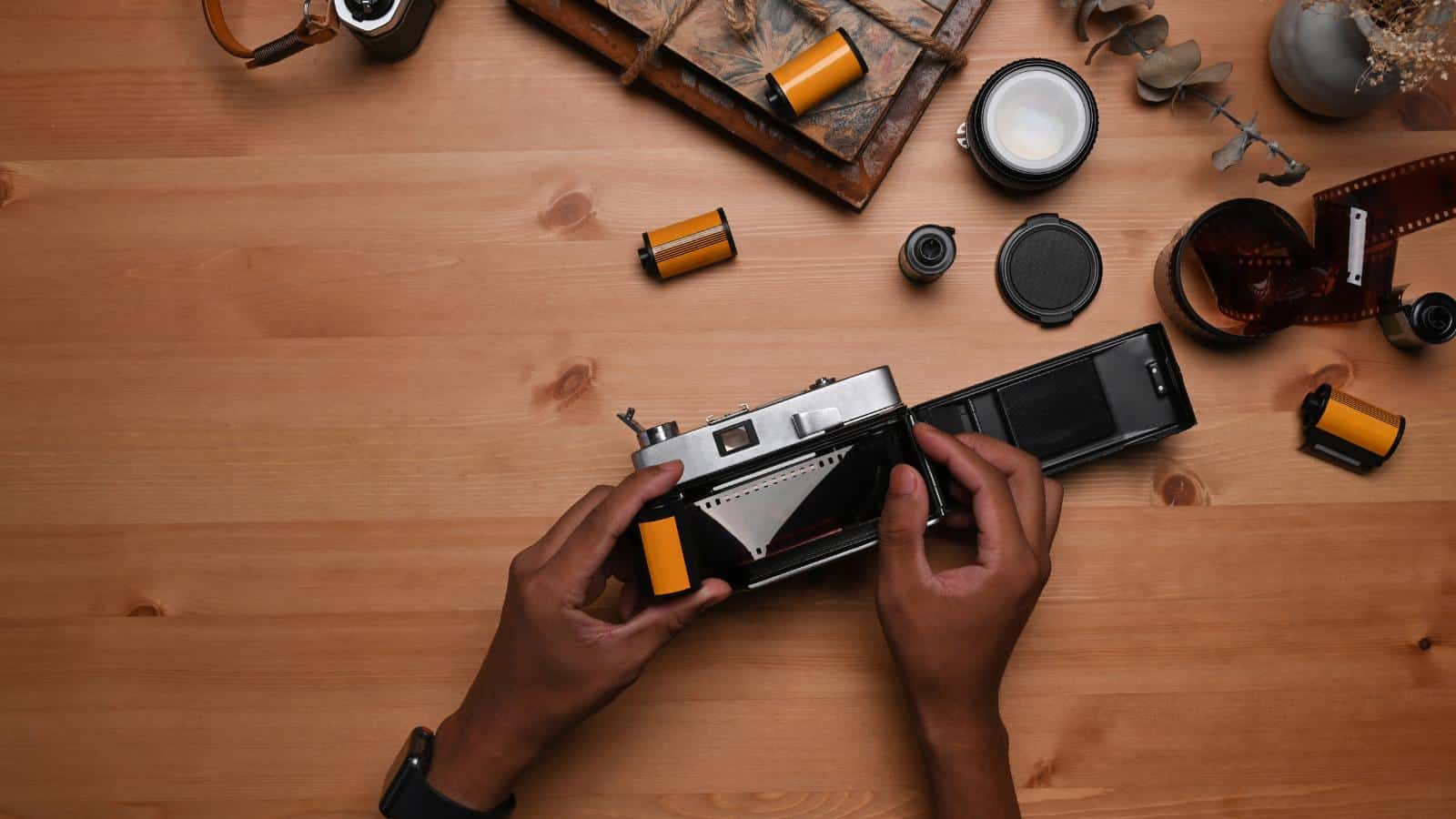The advent of the widespread personal computers and the Internet have rendered many formerly ubiquitous household items obsolete. VHS, Yellow Pages, floppy disks and fax machines were once daily fixtures of home and office life but are now niche items that see little use. Here are 18 everyday items that have all but disappeared from modern life.
VHS Tapes

Video Home System (VHS) and videocassette recorders were the dominant home video format of the 1980s and 1990s. First released in1976 by the Victor Company of Japan, DVDs eventually replaced them, and by 2003, the Washington Times had reported that VHS rentals were supplanted by DVD in the U.S. Home movies are still kept on VHS tapes worldwide, with many keeping their players out of a sense of nostalgia.
Floppy Disks

Floppy disks were introduced in 1971 as a disk storage medium, with thin and flexible magnetic storage encased by a plastic rectangular carrier. They remained a dominant storage medium for almost 40 years, declining in the mid-1990s as USB flash drives and memory cards replaced them. Floppy disks are primarily used in vintage computing, hobbyist circles, and as legacy industrial computer equipment.
Phone Books and Yellow Pages

Phone books list the addresses and telephone numbers of businesses, people, and government agencies. Companies used the Yellow Pages to advertise their services. Phone books were gradually phased out by online directories and search engines, which were more convenient without the environmental costs of the paper use of the books. The Guardian reported that the last U.K. copies of Yellow Pages were shipped out in January 2019 and have been fully digital since.
Cathode-Ray Tube (CRT) Televisions

CRT televisions became widespread after Allen B. Du Mont created the first practical, durable CRT for tv. The Verge reports that by 2000, “their popularity rapidly decayed as LCD panels flooded the market.” Today CRTs are favored by gaming communities, notably the Super Smash Bros. Melee community, for their low latency and compatibility with older game consoles.
Analog Cameras and Film

Analog cameras and film use declined in the 2000s as digital photography took over, which offered photographers immediate results, storage benefits and post-processing flexibility. Analog cameras are still favored by some photographers for their aesthetic and tactile experience.
Cassette Tapes

Dutch company Philips developed cassette tapes in the 1960s as a recording and playback format for audio. Followed by the boombox and the Walkman, cassette tapes in the 1990s fell out of favor when CDs became ubiquitous. Cassette tapes are favored by some artists and listeners for their analog sound quality and collectibility.
Rotary Dial Telephones

The first patent for a rotary dial telephone was granted in 1892, but the classic form with holes in the finger wheels was introduced later in 1904. They later became common in the U.S. in the 1920s and were the telephone of choice for decades. Rotary dial telephones were gradually phased out by the introduction of push-button dialing in the 1960s, which eventually transitioned to smartphones. Today, there is a market for antique rotary phones among collectors, who go to great lengths to restore rare models.
Fax Machines

The Xerox company invented the modern telephone fax machine in 1964 as a way of sending text messages from a scanner through the telephone to a printer, which prints out the message for the recipient to read. Ubiquitous in offices from the 1980s through the 1990s, they were gradually rendered obsolete by the Internet and email. However, they remain popular with some medical and law enforcement agencies worldwide.
Payphones

Payphones are coin-operated public telephones that can be prepaid to make phone calls, typically with coins or credit or debit cards. But in the age of widespread mobile phone ownership, payphones have become obsolete in many countries. Efforts have been made to preserve and repurpose some payphones as free Wi-Fi hotspots and emergency call stations.
Manual Typewriters

National Museums Scotland argues “the typewriter not only revolutionized offices, but also transformed the world of work, especially for women.” Commercial typewriters became common in U.S. offices in the mid-1880s, a decade after their introduction. Now, they are a collector’s item used by hobbyists after being replaced by modern word-processing computer software.
Pagers

Pagers were initially developed in the 1950s and 1960s as a wireless communications device that received and displayed alphanumeric and voice messages. By the 1980s, pagers were widely used, but the advent of mass text messaging in the 2000s saw the decline of pager use. Due to their reliability and simplicity, they are still used by some emergency and healthcare services.
Slide Projectors

Slide projectors became widespread in the 1950s, with families, teachers and lecturers using them to view slideshows. Digital projectors and modern presentation software, including PowerPoint, replaced slide projectors, digitizing the slide show experience.
Walkmans

The Walkman is a line of portable audio players first developed by Sony in 1979. Originally designed as a portable cassette player, the Walkman was highly popular in the 1980s as a compact portable stereo. Gradually replaced by MP3 players and later smartphones, the Walkman is still produced as a digital and audio media player.
Analog Clocks and Watches

Analog clocks and watches have a non-digital display that features the traditional clock face with two or three hands that display the time. Digital timekeeping is more common today, and devices, including smartphones, computers, and smartwatches, use Network Time Protocol to tell the time. Some favor analog clocks and watches for their decorative appeal.
Incandescent Light Bulbs

Incandescent light bulbs were cheap to manufacture and could work well on alternating or direct currents. They became widely used for home and commercial lighting and in portable lighting, including car headlamps, flashlights and table lamps. But Britannica writes that they are “Inefficient in comparison with fluorescent lamps and electric discharge lamps” and are now “reserved mainly for domestic use.”
Carbon Paper

Carbon paper sheets are used to create one or more copies when inscribing on an original document with a pen or typewriter. The advent of digital document duplication has rendered carbon paper obsolete, with scanners, copiers and printers offering more efficient duplication.
Wind-Up Watches

Mechanical or wind-up watches do not use batteries; instead, they use winding springs to store energy to power the watch. Today, most watches are battery-operated or smartwatches, which offer additional functionalities and greater convenience. But mechanical watches remain popular as luxury timepieces and heirlooms.
Overhead Projectors

Overhead projectors use light to project a small document or picture as an enlarged image on a screen, allowing it to be shared with an audience. Interactive whiteboards and digital screens have largely replaced overhead projectors, with their ability to connect to the Internet enabling them to offer more varied presentations.
Read More: 20 Habits That Indicate You’re A Selfish Person

Selfish individuals often exhibit certain habits that can negatively impact those around them. Recognizing these traits can help in dealing with or avoiding negative influences. Here are 20 habits that may indicate someone is a selfish person.
20 Habits That Indicate You’re A Selfish Person
18 Misunderstood Acts The Bible Says Aren’t Actually Sins

People tend to assume that the Bible condemns a wide array of behaviors, but the reality might surprise you. Here, we zoom in on 18 so-called “sins” that may not be as bad as we thought.
18 Misunderstood Acts The Bible Says Aren’t Actually Sins
18 Things You’re Far Too Old To Be Doing Anymore

As we grow older, it’s a great time to reevaluate our choices and habits. In this article, we’ll explore 18 things you may still be doing even though you may be too old.
18 Things You’re Far Too Old To Be Doing Anymore
18 Things That Become Intolerable as You Get Older

As people age, they sometimes don’t find as much joy in things as they used to. An internet survey recently asked, “What are you starting to dislike more as you get older?” Here are the top 19 responses.
18 Things That Become Intolerable as You Get Older
The Boomers Called It: 19 Stupid Trends That Backfired

Sometimes, we get carried away with trends that we think are cool at the time, only to realize later how utterly ridiculous they were. Join us as we take a cringe-worthy trip down memory lane and explore 19 stupid trends that backfired. Prepare for some facepalms!

